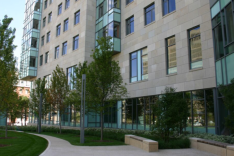
The Future is Electric - 2.832 Solving for Carbon Neutrality at MIT
In late 2021 COP26 was held in Glasgow, where nations from around the world gathered to lay the framework for accelerating the push towards global, net-zero carbon emissions. The overarching goal of this conference to curb global warming to less than 1.5C will require significant culture shifts and unified efforts. Fortunately, MIT had already committed to reducing its carbon footprint with the “Fast Forward MIT: Climate Action Plan”. These commitments include net-zero carbon emissions by 2026 and the elimination of direct emissions by 2050. To achieve these goals, MIT has begun to offset emissions through PPA’s, increasing solar energy installations, and plans to convert transportation to zero-emission. Although these seem like strong initial efforts, much more aggressive measures are required to fully decarbonize campus operations. The goal of this report is to lay out a plan for reaching a 100% reduction in scope 1 and scope 2 MIT campus carbon emissions by 2050. Based on data from Energize_MIT 8, this equates to a reduction in approximately 200,000 metric tons of CO2. To reach this goal, the proposed decarbonization plan relies on a combination of building efficiency improvements, heat pumps, and airflow optimization to reduce HVAC demands, a large-scale heat recovery system, and an eventual retiring of the CUP turbines which will be replaced with the carbon-free power source of nuclear batteries or reliance on the ISO-NE grid with electric boilers.
We have chosen these technologies due to their scalable nature and feasibility in the short and long term. Due to this approach, technologies like biofuels were not considered due to their low energy density not being feasible for this large-scale implementation. Based on our research into the ISO-NE Grid, we have also used the assumption that the grid will not be fully carbon neutral by 2050, which forces MIT to aim for the integration of nuclear without dependence on the grid. It is important to note these assumptions when assessing the recommendations provided for MIT’s path to carbon neutrality. As suggested, this report will outline two paths that both focus on the implementation of building electrification, building efficiency upgrades, and a retrofit of the CUP. The divergence of the two paths comes with the determination of the feasibility of the integration of nuclear technology in Cambridge. One path will focus on the integration of nuclear technology to achieve carbon neutrality at MIT, while another path will focus on the electrification and retrofitting of the CUP with electric boilers as a contingency plan to achieve, or at least approach, carbon neutrality at MIT.


